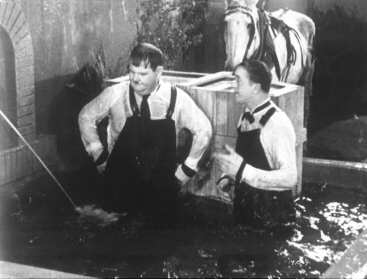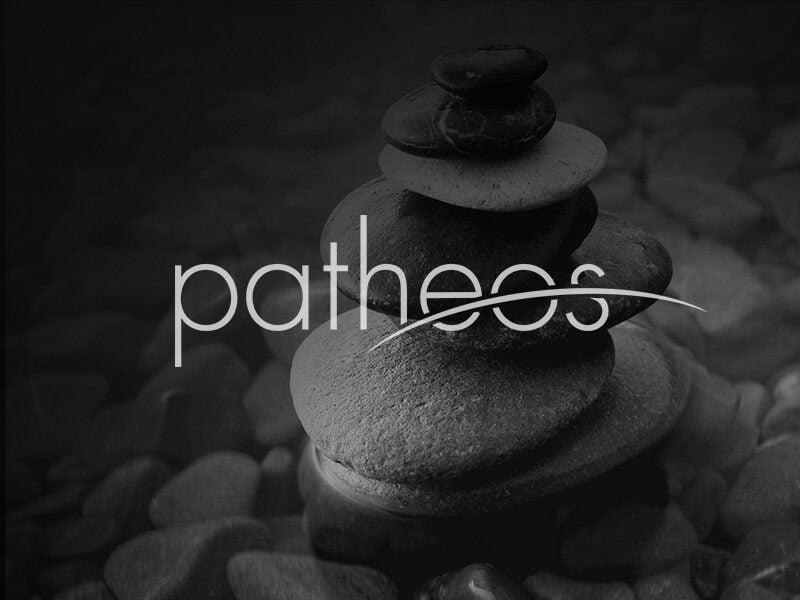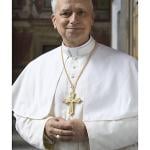Guest blogger Norman Anderson is married to Marjorie and is a Catholic father of high schoolers Kevin, Marybelle and Hazel. He works as a claims adjuster at Skinner’s Insurance Incorporated. He attends St Martha’s Catholic Church in Adam’s Falls, North Carolina. Norman is a suburban hermit.
Marjorie has joined a group at St Martha’s which is called “the Welcome Committee.” One of the things the welcome committee members do is to welcome people who come to St Martha’s. Father Randy gives the names of new families to Marjorie and her friends. It is then their job to arrange a home visit with the new family. I am sure this is a very good idea, but it is not something I would appreciate. I would suspect that the welcoming committee were really making friends with me in order to obtain money. I would also find it difficult to conduct a conversation with strangers.
I find strangers always think they must ask me questions about myself. Perhaps they have learned this from a book which instructs you how to ‘establish rapport’. But they don’t realize that I do not wish to talk about myself nor do I wish to establish rapport with them. I do not mean to be unkind, but I have found that establishing rapport is often rather exhausting and I am very happy not to have rapport. At work Jeannine sometimes makes it a point of engaging me in conversation. When I prove to be somewhat taciturn she says cheerfully, “I’m just trying to establish rapport Normal.” She calls me “Normal” rather than “Norman.” She finds this amusing and I am happy if she does so. She has many burdens in her life so a bit of levity may make things easier for her.
Once at work we had a training day and a woman with a business suit and a short haircut asked us to sit across from another person and tell them about ourselves. Then we had to introduce that person to the rest of the group. I happened to be paired with Jeannine. I was reluctant to tell her much about myself because there is not really very much to say, so I fabricated a story and said that I had been brought up by missionaries in Papua New Guinea and had run away from home at the age of sixteen and made it back to America to live with my grandmother who was a palm reader in West Palm Beach. I worried later that I may have told a lie, but I prefer to think of it as a kind of storytelling. I have not had the courage to tell Jeannine the truth since then. I thought when I mentioned the “palm reader” in “Palm Beach” Jeannine may have caught on that I was being satirical, but she did not.
I asked Marjorie if it was the case that the welcoming committee were really interested in getting people to give money to St Martha’s, and she blushed and said this was not the reason. However, later she admitted that Barbara Cotton, who is one of the members of the welcome committee is also on Father Randy’s stewardship committee. It was Janice who stood up after Mass one Sunday and told us that we should use our “time, talent and treasure” more wisely for the Lord. I have always thought that they are not really very concerned about time and talent, but these are ways to talk about money without being embarrassed. However, I am always embarrassed for them because I know what they really want, but they are too afraid to say so.
Barbara Cotton is very involved in church and likes Father Randy very much. One of her gifts is leading the singing. She welcomes people to church very warmly each Sunday and often sings a song at the time when Holy Communion is administered which is about Eagles Wings. I have never understood the song and am always reminded of the scene in Lord of the Rings where the magician Gandalf is carried away by eagles, but I am sure that is not what the song is about. When Barbara Cotton leads the singing she often lifts up her arms and the fleshy part of the upper arm wobbles a good deal in time to the music. I am sorry to say that this often distracts me from my prayers.
I am not afraid to talk about money, and if Barbara Cotton asked me to I would stand up in church and tell everyone that they should tithe, which means giving ten percent of their income to the church. I have always tithed because I have found it to be a pleasing way to get rid of all the money they keep paying me. I can’t really think of anything else to spend it on, and it seems unwise to save too much or invest it as one only loses out when the stock market crashes. It seems better to me not to have much to start with then you won’t be saddened when you lose it all.
Marjorie finds this annoying because she is somewhat acquisitive at times but it is a little thing I insist on.
In fact, I have recently thought of giving 20% of my salary to the church, but I do not approve of the way Father Randy would spend it. He is very fond of well fitted suits and nice cars and I have heard that he has a flat screen television in every room of the rectory even though he lives there alone. My friend Jean Pierre says that Father Randy wears a toupee and has a holiday home at the beach, but I try not to listen to such stories. However I am curious about the hairpiece. Marjorie says if I don’t want the money I should give it to the children, but that seems a bad idea because it would spoil them. She thinks this is unkind, but I do not see it that way.
I explained to her that it was similar to her welcome committee giving people donuts after Mass. They might start coming to Mass for the donuts and not for the worship of God. Marjorie said I was being quite ridiculous but I am firm in the opinion that donuts after Mass does more harm than good.
Instead of giving the money to Father Randy I spent it on myself. I found a very nice small electric heater at the hardware store and have fitted into the room in the treehouse. Now the weather is starting to get colder it is very snug in the treehouse. I have had the idea of living up there for most of the winter and I would do this except that the family members would find it unusual and they might be the focus of some joking at school if anyone would find out.














